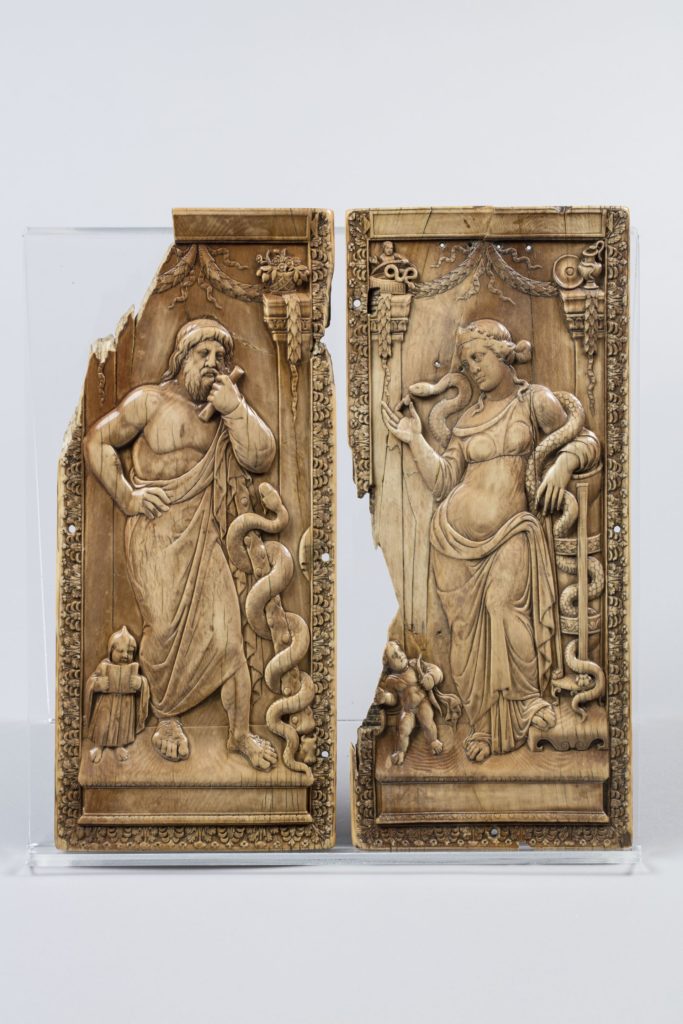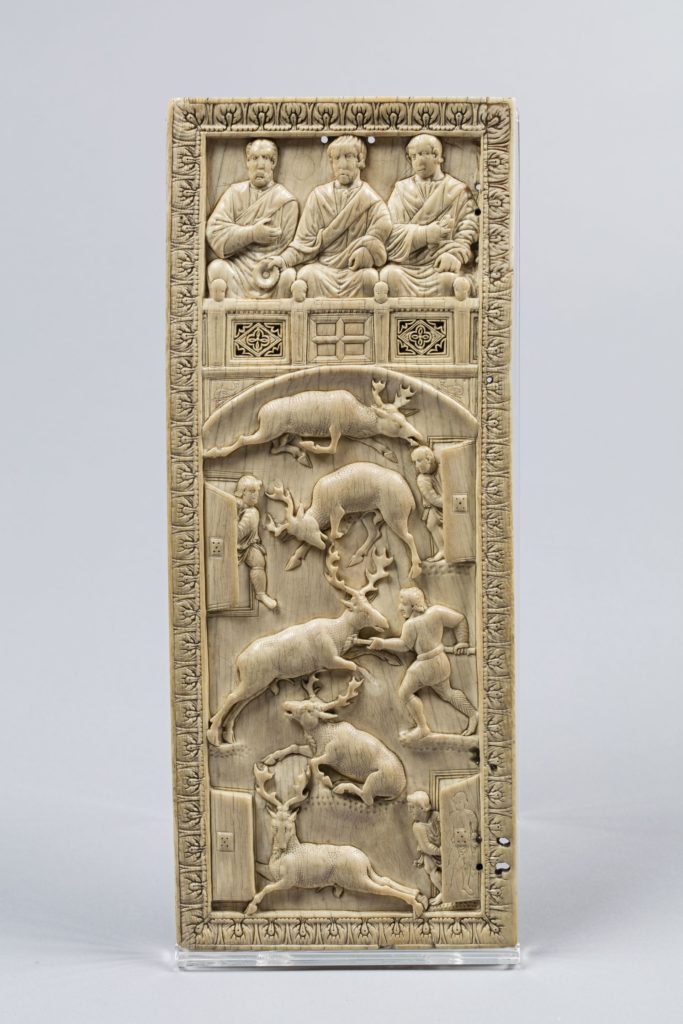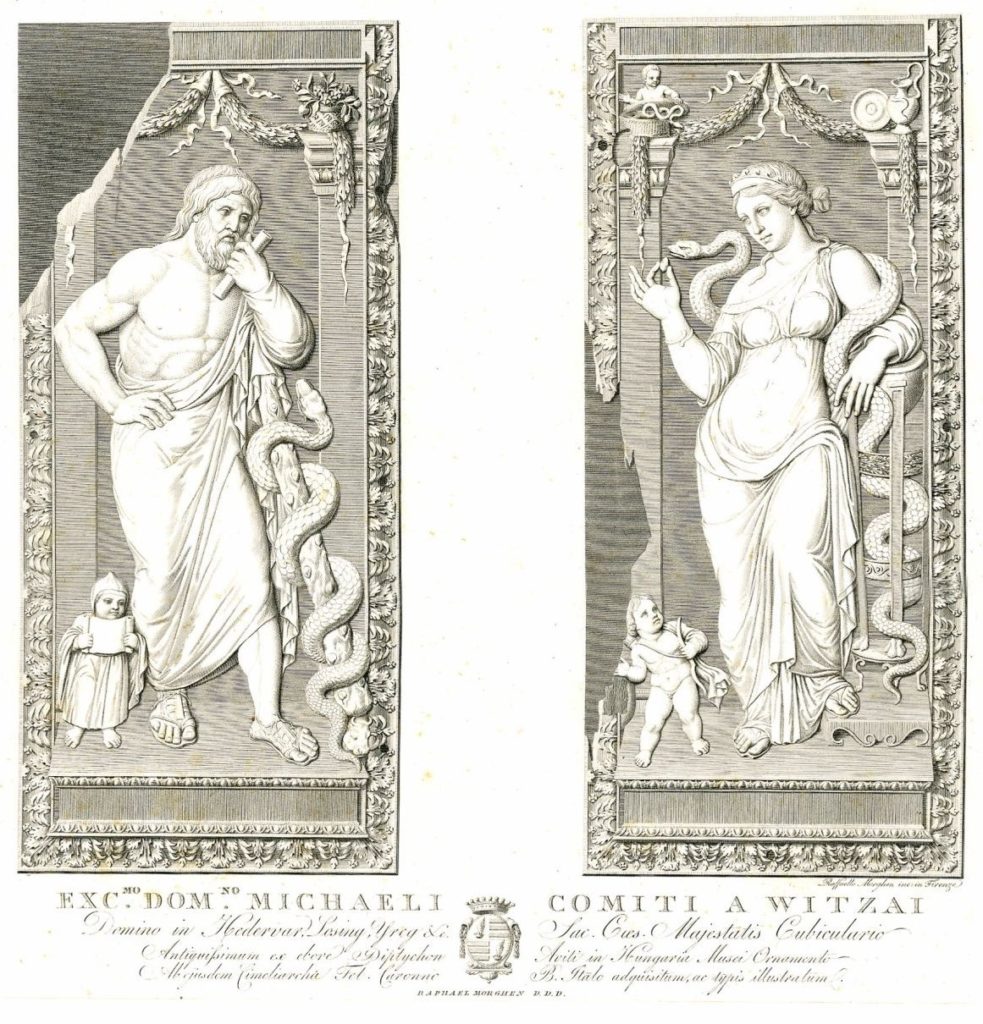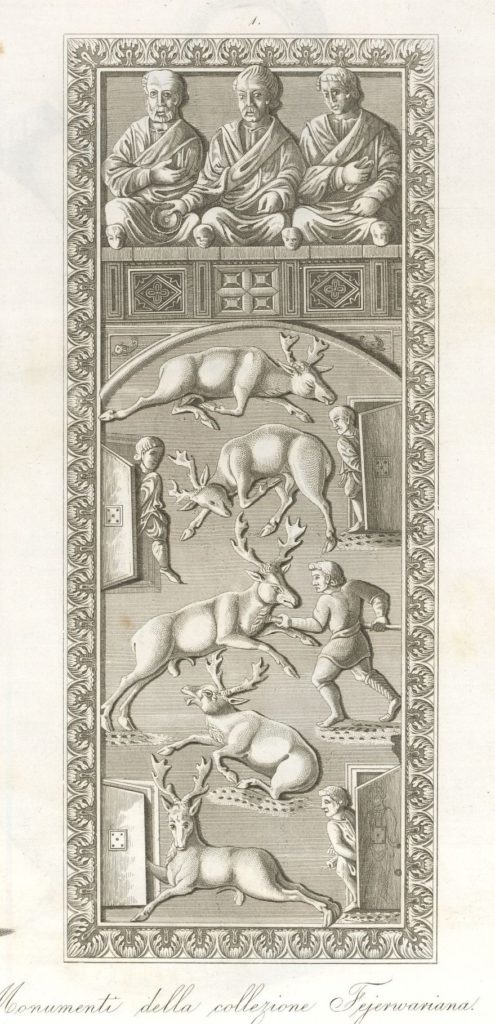We use cookies to provide you with the best possible service and a user-friendly website.
Please find our Privacy Policy on data protection and data management here
Please find more information on the cookies here
From Hédervár and Eperjes to Liverpool: two ivory diptychs from the late Roman world
In a framework of cooperation between the World Museum in Liverpool and the Museum of Fine Arts, two late Roman diptychs can again be admired in Budapest after one and a half century. In the nineteenth century, the pieces belonged to the most significant, internationally renowned Hungarian private collection, that of Gábor Fejérváry and Ferenc Pulszky. The ivory tablets are on view at the current display of Mouseion, the mini exhibition series of the Collection of Classical Antiquities, until 28 February 2021.
Diptych is a Greek compound from the words meaning ‘two’ and ‘to fold’. Such tablets were originally employed in the Roman administration to contain credentials, but from the turn of the fourth and fifth centuries onwards, they began to be used as luxury objects: they were presented by the wealthiest aristocrats to their peers to commemorate significant events like an ascension to office or a marriage. Sometimes it is only the carved decoration of the tablets that allows us to deduce what occasion they may have accompanied. This holds true for the objects from Liverpool as well.
The so-called Venatio panel represents a fallow deer hunt in an amphitheatre. Officials are seated in the balcony above the arena. Such games were staged by wealthy Romans newly appointed to an office: the tablet may have been meant to commemorate such an event.
The other ivory diptych on display was probably tied to an entirely different occasion. The two leaves of the diptych depict Asclepius, the god of medicine, and his daughter, Hygieia, the goddess of good health. The tablets may have been commissioned to commemorate a recovery from an illness, or the birth of a child.
The objects, which date from the early fifth century AD, belong among the most beautiful late antique diptychs. Such ivory carvings were regarded as luxury items and held in high esteem in medieval and early modern Europe. The discovery of the diptych displaying the two deities was enthusiastically received by contemporary connoisseurs – renowned artists of the time made engravings of them, and it even received its own inlaid marquetry box. The diptych was purchased together with this box by Count Mihály Viczay the Younger of Hédervár in 1806. In 1834, the piece was acquired by Gábor Fejérváry, who amassed a significant collection of his own in Eperjes, and later also bought the Venatio-panel at a Parisian auction.
The Asclepius and Hygieia diptych is illustrated on an ink drawing dated as early as the beginning of the 1500s. The first mention of the Venatio-panel, however, is dated to 1805, when the piece was seen in a French private collection housing a number of unique artifacts that had formerly been preserved in monasteries. Perhaps the Venatio-panel had also travelled a similar route.
Following the death of Fejérváry, his nephew, Ferenc Pulszky sold the two diptychs to Joseph Mayer of Liverpool. The British jeweller and businessman regarded the artworks he had acquired as public property, and later donated his 14,000 item collection, spanning different cultures ant time periods, to the city of Liverpool, thus founding the collection of the World Museum in Liverpool.
Thanks to the cooperation between the two museums, the ivory diptychs can now be admired together with other artworks from the former Fejérváry-collection, which are preserved in the Museum of Fine Arts, including the Grimani jug, the vase of Exekias and the bronze statue of Imhotep. A study on the long history of the diptychs was written by archaeologists Ádám Bollók and Chrissy Partheni, and art historian Edit Szentesi. The richly illustrated publication is available at the Museumshop. The exhibition is open until 28 February 2021.




